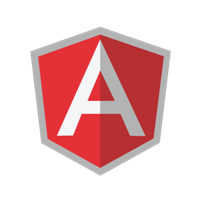Dan Wahlin
AngularJS, JavaScript, HTML5, jQuery, Node.js, ASP.NET, C#, XAML
-
The AngularJS Custom Directives Video Training Course Has Been Released!
-
Adding Azure Active Directory and OWIN Code into an AngularJS/ASP.NET MVC Application to Handle User Authentication
In a previous post I discussed how to setup the necessary configuration code and assemblies in an AngularJS/ASP.NET MVC application in order to authenticate users against Azure Active Directory (AAD). Once the initial configuration is complete you can write code to redirect users to the AAD login screen to retrieve an ID token.
-
Adding Azure Active Directory Configuration Code and Assemblies into an AngularJS/ASP.NET MVC Application
In a previous post I discussed the process for registering an application with Azure Active Directory (AAD) so that users can be authenticated. AAD supports a wide range of features that can be used to perform authentication, authorization, and claims-based security tasks.
-
Creating Custom AngularJS Directives Part 6 - Using Controllers
Up to this point in the AngularJS directives series you’ve learned about many key aspects of directives but haven’t seen anything about how controllers fit into the picture. Although controllers are typically associated with routes and views, they can also be embedded in AngularJS directives. In fact, there are many scenarios where custom directives can take advantage of controllers to minimize code and simplify maintenance. While using controllers in directives is certainly optional, if you’d prefer to build directives using similar techniques that you use now to build views then you’ll find controllers are essential in many cases. By using controllers, directives start to feel like “child views”.
-
Getting Started with ES6 – Transpiling ES6 to ES5 with Traceur and Babel
In the first post in this series I introduced key features in ECMAScript 6 (ES6), discussed tools that can be used today to transpile code to ES5 so that it can work in today’s browsers, and listed several resources that will help get you started. Before jumping into the first official ES6 feature (that’s coming
 in the next post) I wanted to write a step-by-step walkthrough that covers how to get the Traceur and Babel transpilers working with Gulp (a JavaScript task runner). I’m also going to sneak in a little TypeScript as well since it’s another option. By getting these tools in place you can start writing ES6 code, convert/transpile it to ES5, and then use the generated code in older browsers. Going that route lets you take advantage of the future of JavaScript right now without having to wait around until all of the browsers fully support ES6.
in the next post) I wanted to write a step-by-step walkthrough that covers how to get the Traceur and Babel transpilers working with Gulp (a JavaScript task runner). I’m also going to sneak in a little TypeScript as well since it’s another option. By getting these tools in place you can start writing ES6 code, convert/transpile it to ES5, and then use the generated code in older browsers. Going that route lets you take advantage of the future of JavaScript right now without having to wait around until all of the browsers fully support ES6.
-
Registering a Custom AngularJS Application with Azure Active Directory
 If you’re working with Azure and need to add authentication and identity management into an application look no further than Azure Active Directory (AAD). AAD provides a robust set of services for single sign-on, authentication, multi-factor authentication, and more. Rather than setting up a custom authentication provider for an app, you can leverage existing functionality provided by AAD.
If you’re working with Azure and need to add authentication and identity management into an application look no further than Azure Active Directory (AAD). AAD provides a robust set of services for single sign-on, authentication, multi-factor authentication, and more. Rather than setting up a custom authentication provider for an app, you can leverage existing functionality provided by AAD. -
Building Applications with AngularJS, Azure Active Directory, and Office 365/SharePoint
 One of my favorite features of Single Page Applications (SPAs) is the ability to integrate data from nearly any backend technology and have it display on a variety devices (desktop browser, mobile, tablet, and more). Whether you’re calling a service like Firebase or Azure Mobile Services or hitting a custom REST API, the data that’s returned can be integrated into your SPA regardless of
One of my favorite features of Single Page Applications (SPAs) is the ability to integrate data from nearly any backend technology and have it display on a variety devices (desktop browser, mobile, tablet, and more). Whether you’re calling a service like Firebase or Azure Mobile Services or hitting a custom REST API, the data that’s returned can be integrated into your SPA regardless of  the language, technology, or operating system being used on the server.
the language, technology, or operating system being used on the server. -
Getting Started with ES6 – The Next Version of JavaScript
-
My Thoughts on AngularJS 1.3 and 2.0
New to AngularJS? Check out the AngularJS in 60-ish Minutes video to get a jumpstart on using the framework to build Single Page Applications (SPAs). Also check out my AngularJS JumpStart and AngularJS Custom Directives video training courses.


-
Cancelling Route Navigation in AngularJS


